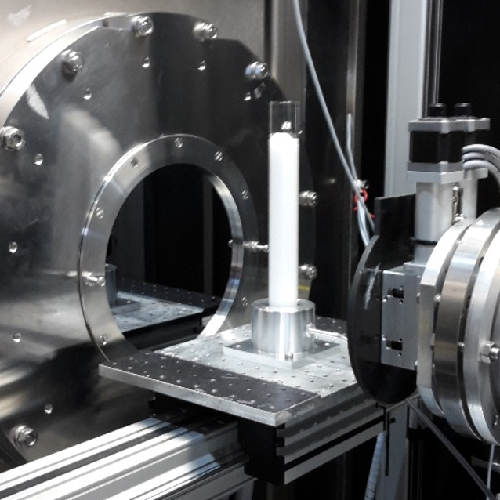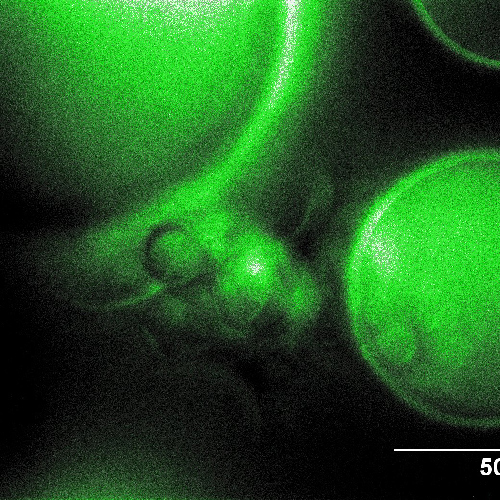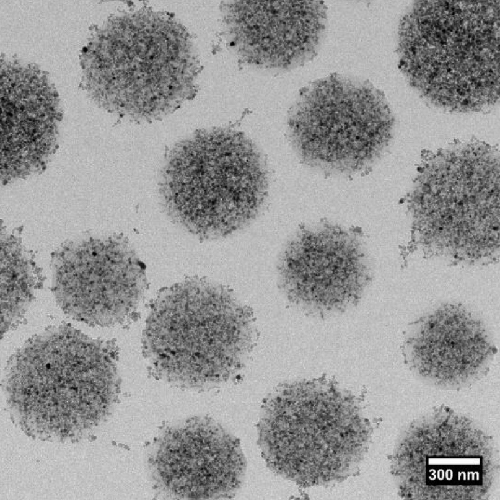Microgels shrink in the solution above their volume phase transition temperature (VPTT) due to the breaking of hydrogen bonds between PNIPAM and the solvent.
The combination of microgels with other components or devices leads to interesting and novel applications and research fields. Such a combination can be obtained by using microgels as a responsive media to acoustic waves or load the microgels with non-organic particles such as gold/silver or magnetic nanoparticles.
Acoustic waves, can transfer a certain amount of energy by penetrating into a liquid solution. As an acoustic wave propagates into the microgel solution, it attenuates due to the absorption of its energy by viscous damping. The absorbed energy may break the PNIPAM hydrogen bonds in the medium and make them shrink while the liquid temperature maintains below its VPTT. Therefore, the amount of energy enough for breaking the hydrogen bonds, that is not high to deteriorate the polymer chains, is a crucial parameter in this context. The shrinking/swelling behavior, dynamic stiffness, as well as streaming pattern of microgels concerning the solvent, are subjected to analyze. This phenomenon opens a new field of research with a wide range of applications introducing acoustic waves as a new stimulus for responsive microgels.
The combination of PNIPAM microgels with gold or magnetic nanoparticles opens up new application through additional stimuli. Gold nanoparticle microgels are one example. Here the VPT can be triggered by light without changing the temperature of the outside of the microgels. This VPT is triggered by the heating of gold nanoparticles through plasmon coupling. Where the gold nanoparticles are behaving as local hot spots. Furthermore, replacing the gold nanoparticles with magnetic ones the VPT may as well be triggered by high frequency magnetic fields. Also, the magnetic nanoparticles are behaving as local hotspots. Additionally, these magnetic nanoparticles are responsive to external magnetic fields (DC) and therefore the magnetic microgels become responsive to magnetic fields. This leads to a deformation of the magnetic microgels on surfaces under magnetic fields in field direction. Furthermore, the magnetic microgels can be moved in solution by external magnetic fields.
Selected publications:
S. Backes, M. Witt E. roeben, L. Kuhrts, S. Aleed, A. M. Schmidt, R. v. Klitzing: Loading of PNIPAM Based Microgels with CoFe2O4 Nanoparticles and Their Magnetic Response in Bulk and at Surfaces, J. Phys. Chem. B 2015, 119, 12129−12137
M. Witt, S. Hinrichs, N. Möller, S. Backes, B. Fischer, R.v.Klitzing: Distribution of CoFe2O4 Nanoparticles Inside PNIPAM-Based Microgels of Different Cross-linker Distributions, J. Phys. Chem. B 2019, 123, 2405−2413
Acknowledgment:
The Ingenium support at TU Darmstadt, for providing the ‘Future Talents Postdoctoral Scholarship’ program is acknowledged.
Contact person:
Amin Rahimzadeh
Atieh Razavi




